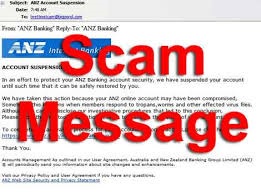Phishing attacks are back
Posted by: Timothy Weaver on 04/01/2015 09:30 AM
[
 Comments
]
Comments
]
Popular in the 1990's, the scams are making resurgence with a vengeance. They entice the target to open an email, click on a link, download material or share confidential information.
 "There’s a perennial appeal to offers of large amounts of money with significant liquidity," said Stephen Cobb, senior security researcher ESET North America. "All of us at various times have thought that a lot of our troubles would be solved if we only had cash."
"There’s a perennial appeal to offers of large amounts of money with significant liquidity," said Stephen Cobb, senior security researcher ESET North America. "All of us at various times have thought that a lot of our troubles would be solved if we only had cash."
Successful scams are often likely to be stung more than once. According to Cobb. "A person who puts money in has a vested interest in believing that [the offer] is real. So the scam artist will often try to hit the person a second time, saying there was a roadblock so he needs more money. He (the scam artist) isn’t out any additional money."
These schemes try to persuade people to click on elements of emails that will launch macros that load malware onto the user’s computer.
Here are some hints to recognize a scam:
• Request to change password
• Request for money
• All caps in header, subject line, address or somewhere else prominent in email
• "Re" in an email that is not a response to another e-mail
• Messages from overseas, particularly anything from a country one has never visited
• Request for personal information
• Offer of a free gift. "There are no free gifts on the Internet," Kohavi said
• Anything that says "click here," particularly to see a video, picture or article
• Emails from a known person addressing you differently than they have before (e.g., Robert rather than Bob)
Source: Esecurityplanet
 "There’s a perennial appeal to offers of large amounts of money with significant liquidity," said Stephen Cobb, senior security researcher ESET North America. "All of us at various times have thought that a lot of our troubles would be solved if we only had cash."
"There’s a perennial appeal to offers of large amounts of money with significant liquidity," said Stephen Cobb, senior security researcher ESET North America. "All of us at various times have thought that a lot of our troubles would be solved if we only had cash."Successful scams are often likely to be stung more than once. According to Cobb. "A person who puts money in has a vested interest in believing that [the offer] is real. So the scam artist will often try to hit the person a second time, saying there was a roadblock so he needs more money. He (the scam artist) isn’t out any additional money."
These schemes try to persuade people to click on elements of emails that will launch macros that load malware onto the user’s computer.
Here are some hints to recognize a scam:
• Request to change password
• Request for money
• All caps in header, subject line, address or somewhere else prominent in email
• "Re" in an email that is not a response to another e-mail
• Messages from overseas, particularly anything from a country one has never visited
• Request for personal information
• Offer of a free gift. "There are no free gifts on the Internet," Kohavi said
• Anything that says "click here," particularly to see a video, picture or article
• Emails from a known person addressing you differently than they have before (e.g., Robert rather than Bob)
Source: Esecurityplanet
Comments






